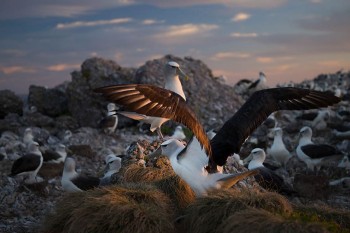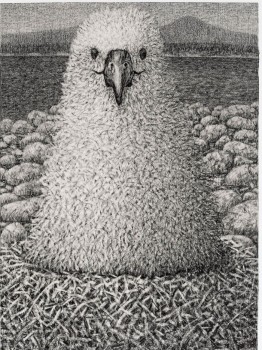The 12th Regular Session of the Western and Central Pacific Fisheries Commission (WCPFC12) met from 3-8 December 2015 in Kuta, Bali, Indonesia.
The Session agreed to a proposal submitted by Japan (“Proposed amendments to CMM 2012-07 Seabirds - Explanatory note and application of CMM 2013-06” - WCPFC12-2015-DP02b) to strengthen its Seabird Conservation Measure (“Conservation and Management Measure to Mitigate the Impact of Fishing for Highly Migratory Fish Stocks on Seabirds” - CMM 2012-07) to require longline fishing vessels that are less than 24 m in length fishing north of 23°N to use at least one seabird mitigation measure from Column A of Table 1 of CMM 2012-07. Column A of Table 1 includes mitigation measures that are considered by ACAP to have proven efficacy in reducing seabird bycatch.
The amendment to CMM 2012-07 also included a specification for short streamers for use on vessels less than 24 m. As further research is required on the design and specifications of bird-scaring lines for these smaller vessels, it was agreed that the current specification would be reviewed no later than three years from implementation of the amended CMM, on 1 January 2017. The review would be undertaken on the basis of scientific data submitted.

Short-tailed Albatross at sea in the North Pacific, photograph by Aleks Terauds
The meeting also considered a further proposal to amend CMM 2012-07 (“Proposal to Revise Conservation and Management Measure on Seabirds (CMM 2012-07)” - WCPFC12-2015-DP11), submitted by members of the Pacific Islands Forum Fisheries Agency (FFA), to extend the area of application of CMM 2012-07 to south of 25°S, rather than the existing requirement for it to apply southwards from 30°S. Consensus could not be achieved on this proposal and it was not agreed to.
The Agreement was represented at WCPFC12 by its Executive Secretary, Warren Papworth.
Warren Papworth, ACAP Executive Secretary, 19 December 2015

 English
English  Français
Français  Español
Español 






